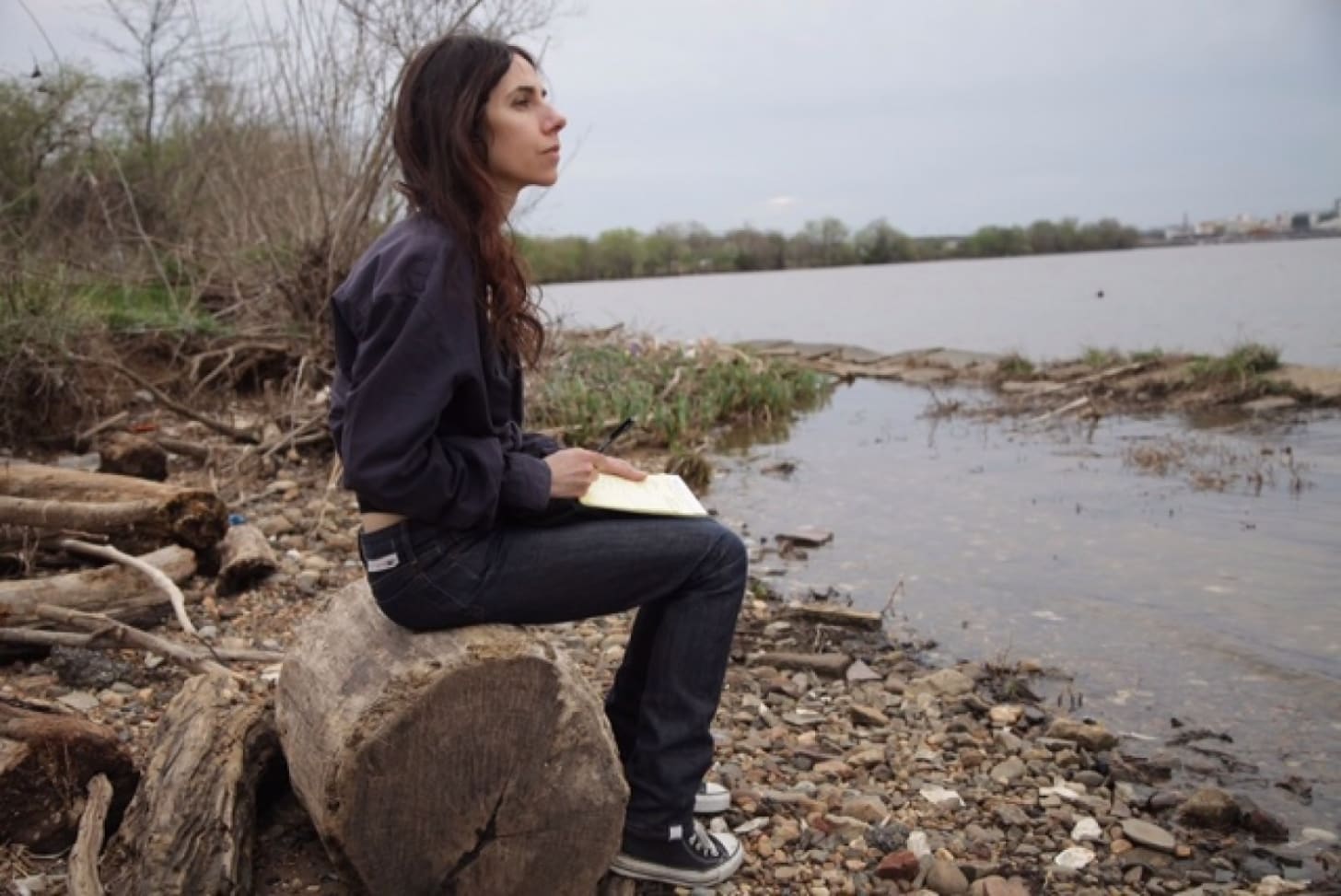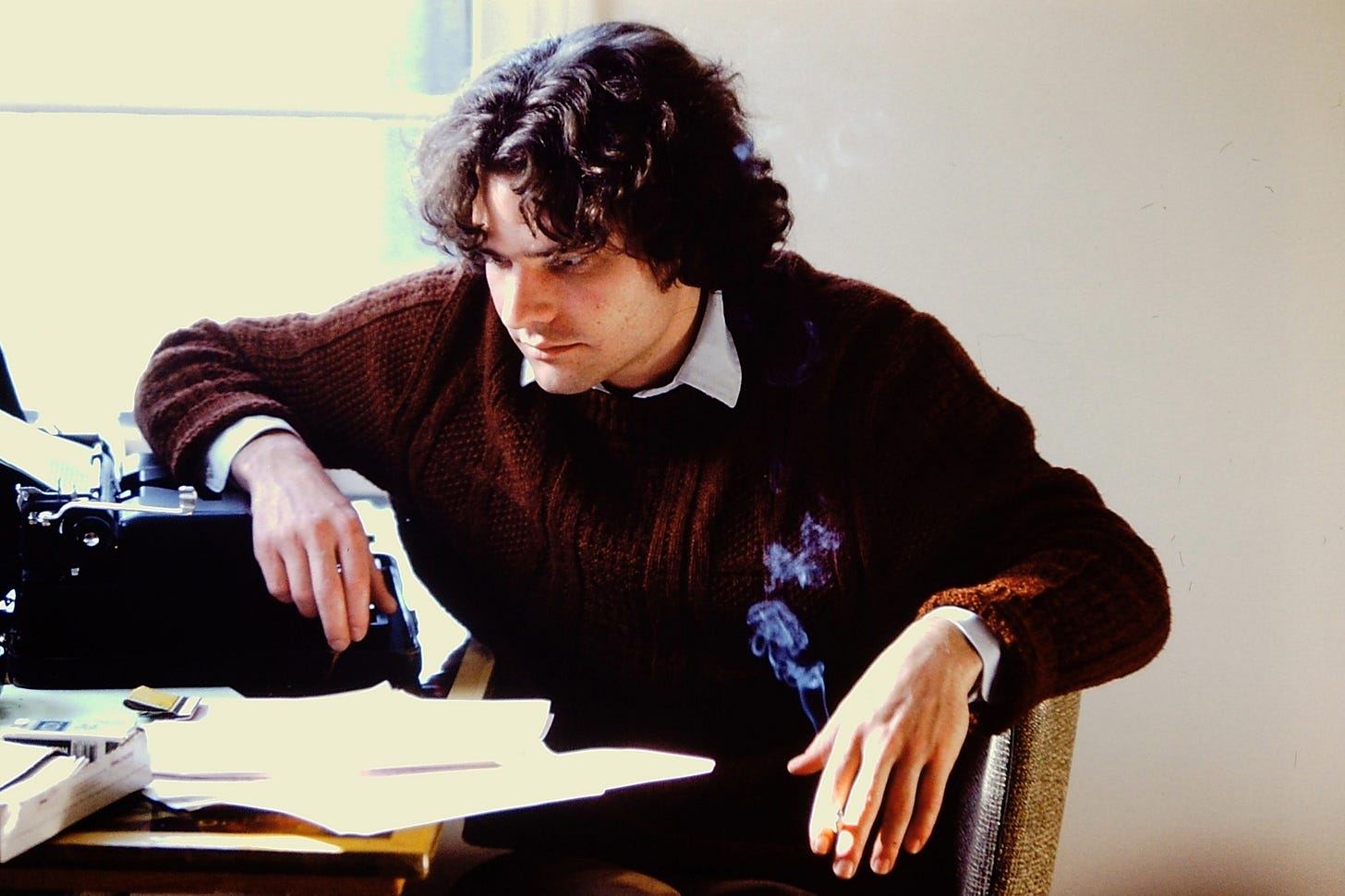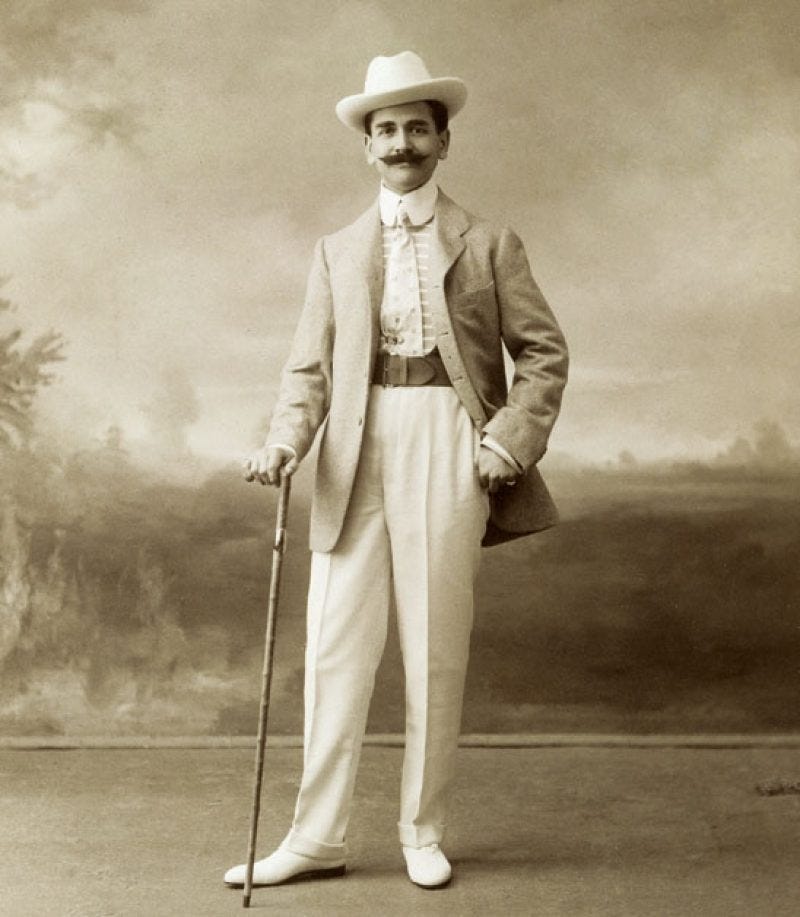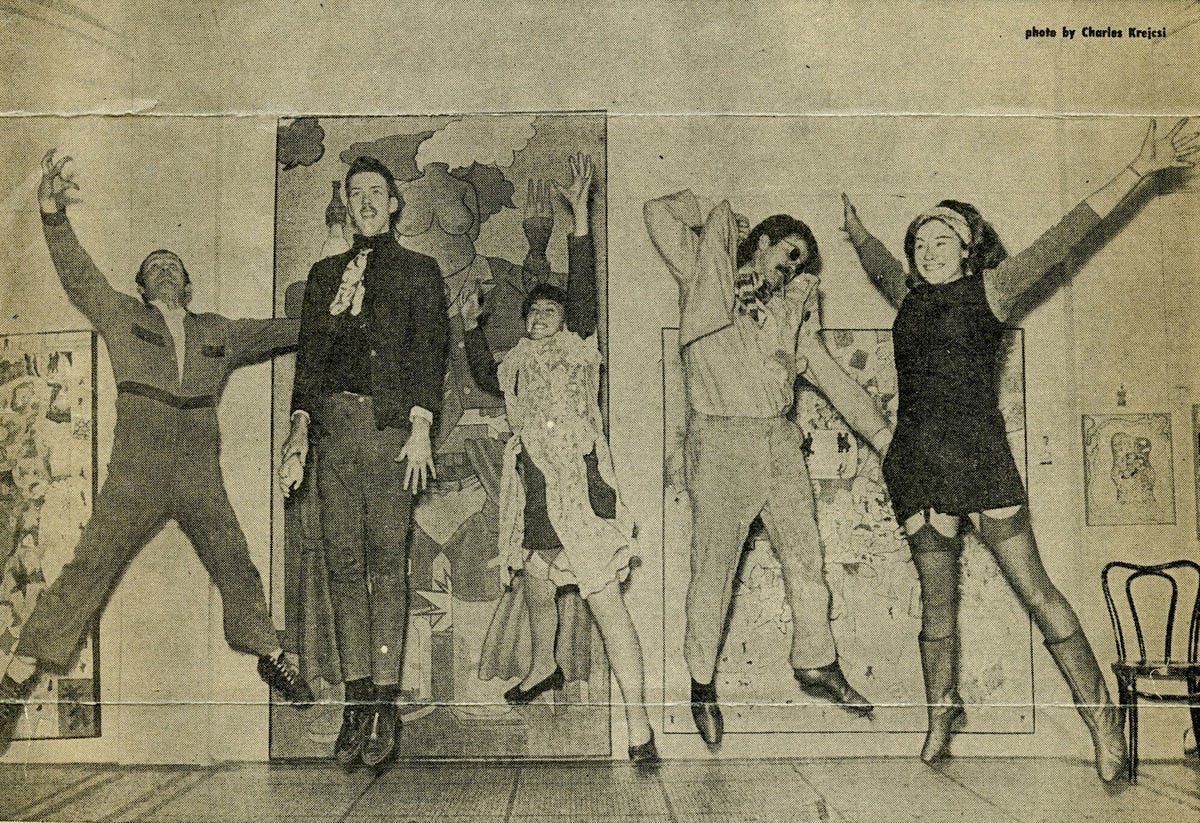Newsletter #15 / September 29th
BODIES + BORDERS / PJ Harvey / The Hairy Who / Denis Johnson / Sylvia Plath
Dear friends:
I have been thinking about reopening,
unpicking the invisible lines that have been pressed into the sides of my belly
and saying okay!! come in!!
my belly
our belly
the larger bellies of the continent,
sharing in the upcycling of pranayama and
all illuminated [backlit] by globes of swinging raviolo that create
al fresco environments
out of swelling holes
today i left the hose on too long
and as i walked through the yard, pulling at the branches of the dead tree
that we will burn tomorrow
wet dirt sprung up my legs,
and clung to the pants that i want to wear
later, when i will pay a small fee
to bend my body in a warm room and wonder when
My drishti will call

Figure of a Woman Shown in Motion in Vier Bücher von menschlicher Proportion, 1528, Albrecht Dürer. Woodcut and letterpress
Songs for the week
Paul Simon’s Late in the Evening (1980)

Paul Simon’s Early Years: 10 Fascinating Pre–Simon and Garfunkel Songs — Jordan Runtagh [RS, 2016]
Garfunkel was rarely comfortable
being one half of Tom and Jerry.
"It was all over my head," he says
"I never would have done it if Paul
hadn't pulled me along. I was too fearful
of the competitive, adult world
of rock & roll." After earning $2,000
in royalties of from "Hey Schoolgirl,"
he put it in the bank and resumed
the studies that he hoped would lead
him to Columbia University.
Meanwhile, the adult world
of rock & roll seemed to suit
Simon just fine. He spent his own
share of the royalties on a
fire-red Chevy Impala convertible,
further cementing his status
as a neighborhood hero.
PJ Harvey’s Man-Size (1993)

I gave a famous rock star a windshield tour of D.C. — and didn’t know who she was !!!! [exclamation marks added by editor] [me] — Paul Schwartzman (Washington Post, 2016)
As a middle-aged man with three kids,
a dog and a sizable mortgage,
I’m more than willing to acknowledge
that I am not what anyone would consider hip.
We drove past liquor stores
and carryout joints along Good Hope
Road and Martin Luther King Jr. Avenue.
We passed the campus of St. Elizabeths Hospital,
a mental institution where
the Department of Homeland Security
is relocating. We went by the M.L.K. Deli,
Matthews Memorial Baptist Church
and the IHOP,
which I told them was Southeast
Washington’s only sit-down restaurant.
Farther north, I drove through a housing
project and pointed out a spot
that was once home to a thriving
methodone clinic. Here was Benning Road,
infamous for its shootings.
Here was South Capitol Street,
another strip marked by carnage,
a corridor that led all the way
to the U.S. Capitol. And here was East Capitol
Street, where the city had replaced
a notoriously violent housing
project with mixed-income townhouses,
created under a federal program
known as Hope VI.

You can watch the Community of Hope video, that tracks this interaction, here
Articles for the week
Denis Johnson’s Emergency (1992)

One star was so hot it showed, bright and blue, in the empty sky.
“I recognized you right away,” I told Hardee. “But what happened to your hair? Who chopped it off?”
“I hate to say.”
“Don’t tell me.”
“They drafted me.”
“Oh no.”
“Oh yeah. I’m AWOL. I’m bad AWOL. I got to get to Canada.”
“Oh, that’s terrible,” I said to Hardee.
“Don’t worry,” Georgie said. “We’ll get you there.”
“How?”
“Somehow. I think I know some people. Don’t worry. You’re on your way to Canada.”
That world! These days it’s all been erased and they’ve rolled it up like a scroll and put it away somewhere. Yes, I can touch it with my fingers. But where is it?
After a while Hardee asked Georgie, “What do you do for a job,” and Georgie said, “I save lives.”
Australian Marginalia: Encounters with Australia in Raymond Roussel, John Ashbery and Georges Perec
— Brendan Casey (Cordite Poetry Review, 2019)
My little Charlotte,
You would not like Melbourne, for it is full of handsomes [sic] cabs. I adore it, for I love this form of locomotion. I have already used the candle-powered heater, for it is winter here; during the first part of the crossing, I think they would have melted without my lighting them. As my room faces due north, I have the sun all day. There are delicious oysters and as there is no ‘r’ in the month, it is the perfect season for them. One evening, I intend to eat kangaroo soup, which is a great Australian specialty. Horse races are a passion. There are seven tracks in Melbourne and every other city likewise; as for towns, they all have at least one. This is the home of Melba; her real name is Armstrong and Melba is a stage name taken from Melbourne. There are two beach resorts near here called Brighton and Menton. It’s really worthwhile to come so far so as to be able to make an excursion from Brighton to Menton, which I have done!
A thousand tender thoughts,
Raymond

Film for the week
Leslie Buchbinder’s Hairy Who & The Chicago Imagists (2014)

From Jim Nutt’s cigar-chomping, amputated women to Christina Ramberg’s studies of corsetry and bondage; from Barbara Rossi’s bejeweled dot paintings to Roger Brown’s secretive, silhouetted figures in windows; Chicago’s diverse artists followed no trend, preferring a path they ferociously cleared for themselves. Hairy Who & The Chicago Imagists tells the story of the artists that emerged from the catalyzing exhibitions at the Hyde Park Art Center from 1966–73, starting with the Hairy Who, who would come to be known as the Chicago Imagists. It brings to life the milieu of Chicago in the 1960s, and also showcases the legacy of the Imagists’ work in contemporary art production today, from Jeff Koons to Chris Ware. Themes in the narrative include the Imagists’ emergence within the national context of abstract expressionism and pop art, the rise and fall of taste within art history, and the uncharacteristic equality afforded to women artists among this Chicago group.
—MCA Chicago, 2014

Suellen Rocca’s Lamp Poem (ca. 1969)

Jim Nutt’s Untitled (Hairy Who Exhibition Poster for the San Francisco Art Institute); and Untitled (Hairy Who Exhibition Poster for the Hyde Park Art Center, 1968
Something nice to end on
Sylvia Plath’s Mushrooms (1959)

Overnight, very
Whitely, discreetly,
Very quietly
Our toes, our noses
Take hold on the loam,
Acquire the air.
Nobody sees us,
Stops us, betrays us;
The small grains make room.
Soft fists insist on
Heaving the needles,
The leafy bedding,
Even the paving.
Our hammers, our rams,
Earless and eyeless,
Perfectly voiceless,
Widen the crannies,
Shoulder through holes. We
Diet on water,
On crumbs of shadow,
Bland-mannered, asking
Little or nothing.
So many of us!
So many of us!
We are shelves, we are
Tables, we are meek,
We are edible,
Nudgers and shovers
In spite of ourselves.
Our kind multiplies:
We shall by morning
Inherit the earth.
Our foot's in the door.

Taken from Fungi History of Australia (1996)
What FORA wants
The FORA newsletter seeks to bring forward the intertextuality that we reside in, and the inextricable ways in which art and life are linked. That is an obvious point, but one that must be constantly remarked upon, as it is one we are constantly surprised by. To be reminded of these circles is to be drawn back into the fold, equipped with the tools of thinking critically and acting compassionately.
pps/FORA is developed on the land of the Jagera and Turrbal peoples



